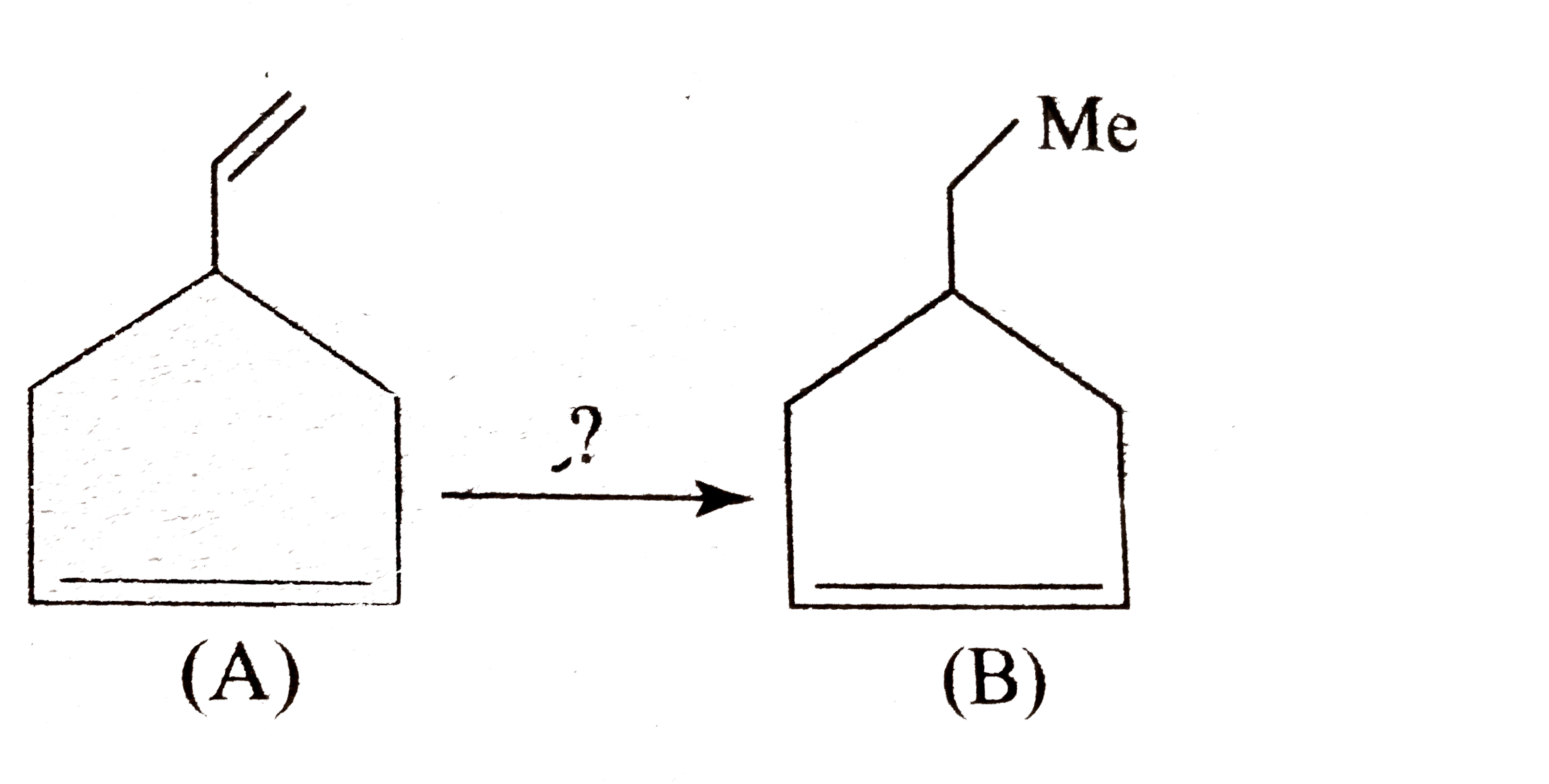The reagent used in the conversion of 1-butanol to 1-bromobutane is :
CHBr3
Br3
CH3Br
PBr3
The correct Answer is:D
To convert 1-butanol to 1-bromobutane, we can follow these steps:
1. Identify the Reactants:
- The starting material is 1-butanol, which has the structure CH3-CH2-CH2-CH2OH.
2. Choose the Appropriate Reagent:
- To convert an alcohol to a bromoalkane, we need a reagent that can facilitate the substitution of the hydroxyl (-OH) group with a bromine atom (Br).
3. Use of Phosphorus Tribromide (PBr3):
- Phosphorus tribromide (PBr3) is a suitable reagent for this conversion. When 1-butanol reacts with PBr3, the lone pair of electrons on the oxygen atom of the alcohol attacks the phosphorus atom in PBr3.
4. Formation of an Intermediate:
- This reaction leads to the formation of an oxonium ion intermediate, where the hydroxyl group is converted into a better leaving group, resulting in the release of a bromide ion (Br-).
5. Substitution Reaction:
- The bromide ion (Br-) then attacks the carbon atom that was bonded to the hydroxyl group, resulting in the substitution of the -OH group with a bromine atom.
6. Final Product:
- The final product of this reaction is 1-bromobutane (CH3-CH2-CH2-CH2Br).
Conclusion:
The reagent used in the conversion of 1-butanol to 1-bromobutane is Phosphorus Tribromide (PBr3).
- The starting material is 1-butanol, which has the structure CH3-CH2-CH2-CH2OH.
- To convert an alcohol to a bromoalkane, we need a reagent that can facilitate the substitution of the hydroxyl (-OH) group with a bromine atom (Br).
- Phosphorus tribromide (PBr3) is a suitable reagent for this conversion. When 1-butanol reacts with PBr3, the lone pair of electrons on the oxygen atom of the alcohol attacks the phosphorus atom in PBr3.
- This reaction leads to the formation of an oxonium ion intermediate, where the hydroxyl group is converted into a better leaving group, resulting in the release of a bromide ion (Br-).
- The bromide ion (Br-) then attacks the carbon atom that was bonded to the hydroxyl group, resulting in the substitution of the -OH group with a bromine atom.
- The final product of this reaction is 1-bromobutane (CH3-CH2-CH2-CH2Br).
The reagent used in the conversion of 1-butanol to 1-bromobutane is Phosphorus Tribromide (PBr3).
Topper's Solved these Questions
- ALCOHOLS, PHENOLS & ETHERS BOOK - VMC MODULES ENGLISHCHAPTER - ALCOHOLS, PHENOLS & ETHERS EXERCISE - IN-CHAPTER EXERCISE - H
10 Videos
- ALCOHOLS, PHENOLS & ETHERS BOOK - VMC MODULES ENGLISHCHAPTER - ALCOHOLS, PHENOLS & ETHERS EXERCISE - IN-CHAPTER EXERCISE - I
10 Videos
- ALCOHOLS, PHENOLS & ETHERS BOOK - VMC MODULES ENGLISHCHAPTER - ALCOHOLS, PHENOLS & ETHERS EXERCISE - IN-CHAPTER EXERCISE - F
10 Videos
- 13-14 HYDROGEN & S-BLOCK ELEMENTBOOK - VMC MODULES ENGLISHCHAPTER - 13-14 HYDROGEN & S-BLOCK ELEMENTEXERCISE - JEE Advanced Archive
48 Videos
- ALCOHOLS, PHENOLS & ETHERSBOOK - VMC MODULES ENGLISHCHAPTER - ALCOHOLS, PHENOLS & ETHERSEXERCISE - Impeccable
100 Videos
Similar Questions
The reagent that brings about the conversion of butanol to chlorobutane is
View SolutionReagent (s) used for the conversion of propanol is
View SolutionReagent used for the given conversion is
 :
:
View SolutionReagent used for the given conversion is
 :
:
View Solution
Which reagent is used for the conversion of (A) to (B) ?
View Solution
Reagents used in conversion from (A) to (B) are:
View SolutionConvert :
a. 1−Bromobutane to 2−bromobutane
View SolutionChoose the correct reagent used in the conversion.

View Solutionsuggest a reagent for the conversion of ehanol to ethanal.
View SolutionBest reagent for the conversion of AgNO3 to Ag is
View Solution
